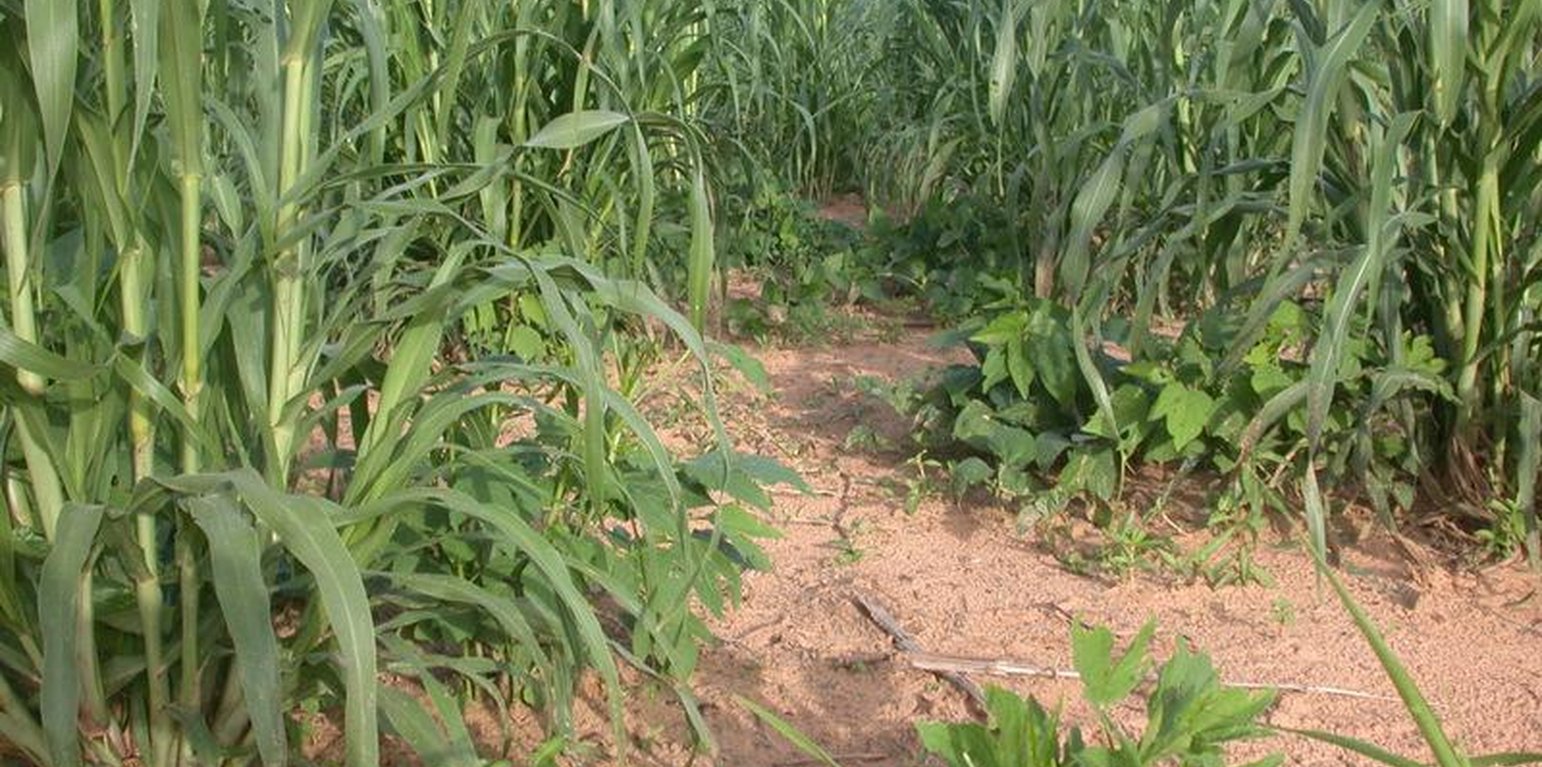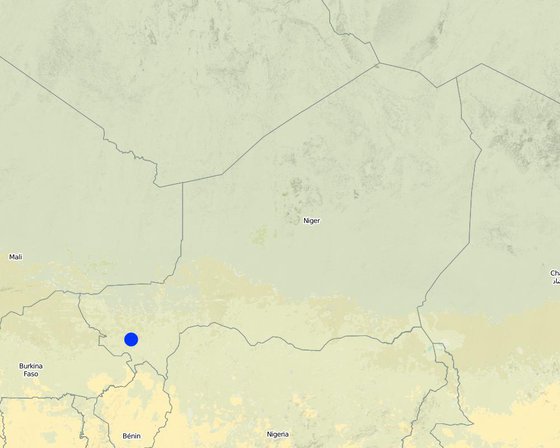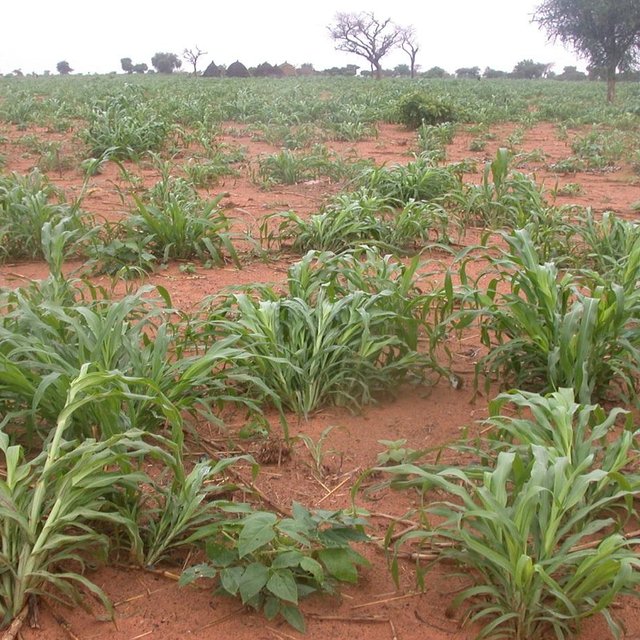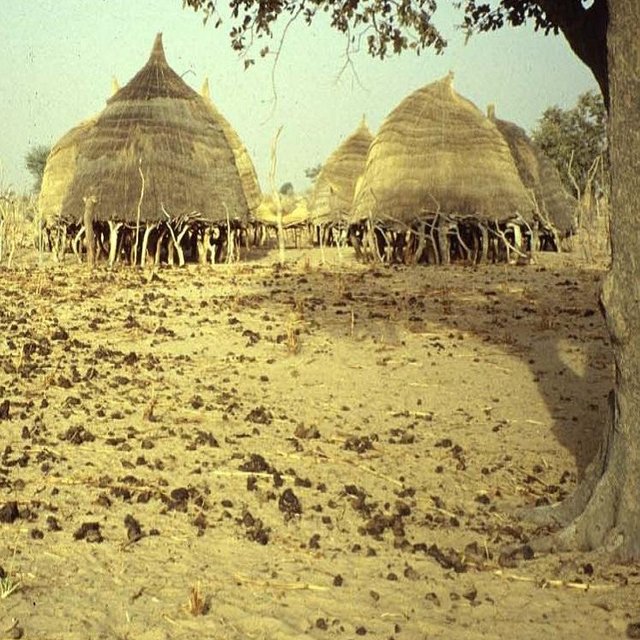



At intervals of 2-3 years the Peulh agropastoralists relocate with their livestock to a new area previously used for crop cultivation - where they install their temporary dwellings and improve soil fertility by applying farmyard manure and other organic materials.
The rotation of temporary habitation areas leads to successive fertilization of the land. Livestock (cattle or small ruminants) are corralled or tethered in the rehabilitation area over-night. They feed on crop residues and emerging grasses after harvesting of the crops. Dung dropped within the coral area is collected and then distributed on the fields. The main criterion for site selection is the level of land degradation. The size of the area occupied is maximum 500 m2, and depends on family size, herd size and on the quantitative and qualitative objectives of soil fertilization of the land owner.
In the years after settlement (after families move to a new location) the treated area is used for crop cultivation, and crop rotation/intercropping are practiced (e.g. millet/ legumes) for increased and diversified production, improved pest control and fertility management.
The effectiveness of this technology has led to field-fertilization contracts between agro-pastoralists and sedentary farmers. The farmers offer post-harvest grazing rights to the agropastoralists who in turn fertilize the land and benefit from the access to the important weekly markets in the area where they can sell milk. In this case the agropastoralist families and their livestock split up after the rainy season: a part assures fertilization of the own land, the other part is in charge of fertilizing foreign land (during 3-4 months) before returning home.

ສະຖານທີ່: Tillabéry Region, Niger, Damari, Kollo District, ໄນເຈີ
ຈໍານວນ ພື້ນທີ່ ທີ່ໃຊ້ ເຕັກໂນໂລຢີ ທີ່ໄດ້ວິເຄາະ:
ການແຜ່ກະຈາຍຂອງເຕັກໂນໂລຢີ: ນໍາໃຊ້ໃນຈຸດສະເພາະ / ແນໃສ່ນໍາໃຊ້ໃນພື້ນທີ່ຂະໜາດນ້ອຍ
ຢູ່ໃນເຂດປ່າສະຫງວນທີ່ບໍ?:
ວັນທີຂອງການປະຕິບັດ: ຫຼາຍກ່ອນ 50 ປີຜ່ານມາ (ແບບພື້ນບ້ານ)
ປະເພດຂອງການນໍາສະເໜີ








| ລະບຸ ປັດໃຈ ນໍາເຂົ້າ ໃນການຜະລີດ | ຫົວໜ່ວຍ | ປະລິມານ | ຕົ້ນທຶນ ຕໍ່ຫົວໜ່ວຍ (n.a.) | ຕົ້ນທຶນທັງໝົດ ຂອງປັດໃຈຂາເຂົ້າ ໃນການຜະລິດ (n.a.) | % ຂອງຕົ້ນທຶນທັງໝົດ ທີ່ຜູ້ນໍາໃຊ້ທີ່ດິນ ໃຊ້ຈ່າຍເອງ |
| ແຮງງານ | |||||
| All the Labour | persons/day | 100.0 | 1.5 | 150.0 | 100.0 |
| ວັດສະດຸກໍ່ສ້າງ | |||||
| Lumber and straw for hut | ha | 1.0 | 100.0 | 100.0 | 100.0 |
| ຕົ້ນທຶນທັງໝົດ ໃນການຈັດຕັ້ງປະຕິບັດ ເຕັກໂນໂລຢີ | 250.0 | ||||
| ຄ່າໃຊ້ຈ່າຍທັງໝົດ ສຳລັບການສ້າງຕັ້ງເຕັກໂນໂລຢີ ເປັນສະກຸນເງີນໂດລາ | 250.0 | ||||
| ລະບຸ ປັດໃຈ ນໍາເຂົ້າ ໃນການຜະລີດ | ຫົວໜ່ວຍ | ປະລິມານ | ຕົ້ນທຶນ ຕໍ່ຫົວໜ່ວຍ (n.a.) | ຕົ້ນທຶນທັງໝົດ ຂອງປັດໃຈຂາເຂົ້າ ໃນການຜະລິດ (n.a.) | % ຂອງຕົ້ນທຶນທັງໝົດ ທີ່ຜູ້ນໍາໃຊ້ທີ່ດິນ ໃຊ້ຈ່າຍເອງ |
| ແຮງງານ | |||||
| On-going fertilisation | persons/day | 10.0 | 1.5 | 15.0 | 100.0 |
| ຕົ້ນທຶນທັງໝົດ ທີ່ໃຊ້ໃນການບໍາລຸງຮັກສາ ເຕັກໂນໂລຢີ | 15.0 | ||||
| ຄ່າໃຊ້ຈ່າຍທັງໝົດ ສຳລັບການບົວລະບັດຮກສາເຕັກໂນໂລຢີ ເປັນສະກຸນເງີນໂດລາ | 15.0 | ||||
Through mutual aid in technology implementation